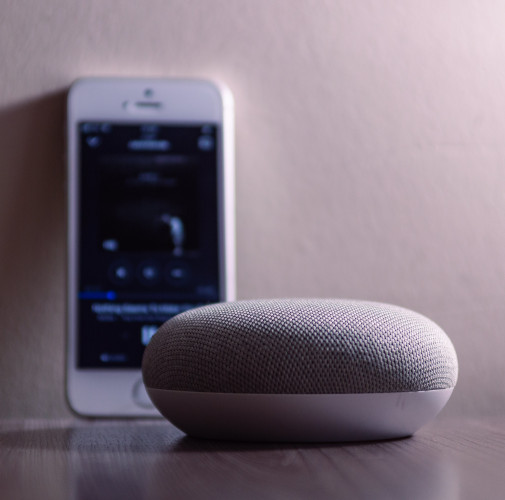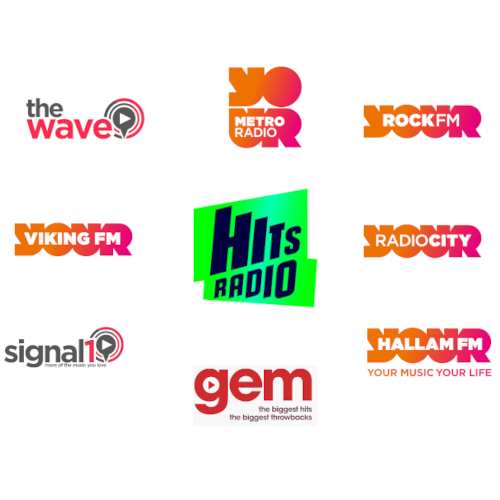
The post-pandemic rise of digital audio
In today’s connected world, audiohas transformed into a truly anytime, anywhere, anyhow experience. The pandemic has changed the way we consume audio – and now we have the Winter 2021 MIDAS report to show us exactly how.
What is MIDAS?
MIDAS stands for ‘Measurement of Internet Delivered Audio Services’. The MIDAS Survey is designed to provide context and insight into how, when and where audio content is being consumed by listeners. [NG1]
With the increased popularity of connected devices such as smart speakers and smartphones, MIDAS shows how listeners are embracing the multiplatform and multi-device offering. MIDAS also reveals the activities they are doing whilst listening, where they are listening, and who they are listening with.
Audio Overview
32% of all audio consumed is via DAB digital radio.
Followed closely by 19% listening on smartphones, and 19% listening on FM/AM radio.
Despite the growth of podcasts and streaming services, 70% of all online listening is radio.
Over half (54%) of live radio listening is done alone, this is consistent through the age demographics. 21% with a partner or spouse and 12% with work Colleagues.
On Demand Music
Over half (53%) of all On Demand Music (including Spotify, Apple Music, Amazon Prime Music) users are aged between 15-34.
Streaming listening hours have grown by 136% in the last 5 years.
40% of On Demand Music listening spent listening with other people.
59% of on demand music is consumed on a mobile phone.
46% of people listen to music on demand whilst working and/or studying
Post Pandemic Listening
Podcast listening has increased from 58 million hours per week in 2019 to 68 million hours per week in 2021.
On demand music listening has increased from 172 million hours per week in 2019 to 208 million hours per week in 2021 – an increase of a whopping 36 million hours!
Digital tracks and CD’s have seen rapid decline in listening hours since 2019.
Voice activated speaker listening is up 7% from 2019 – 16% of people now consume audio via their smart speaker.
Podcast reach is up 3% from 2019 and has seen a rise in popularity across all age groups, particularly 15-24 year olds.
Live radio update
Unsurprisingly, the majority of people are driving or travelling when listening to live radio.
Other tasks include eating, drinking, cooking, household chores, working, studying, getting ready, sports, exercise and generally doing nothing in particular! There are very few media channels which can be consumed whilst on the go – the unique nature and power of radio.
25% of live radio hours are done working and/or studying. With the big shift to home and hybrid working, this again displays the importance in which radio plays in our everyday lives.
76% of new music discoverers still consider the radio to be important for finding new tracks.
Over half (54%) of live radio listening is done alone – 21% with a partner or spouse and 12% with work Colleagues. In ‘home’ dominates live radio listening hours with a share of 62%, in vehicle 22%, at work or place or study 15%.
How We Consume Podcasts
94% of people listen to podcasts alone.
67% of podcast listeners listen to the whole episode.
59% of podcast listening is via headphones, providing brands with a personal way of communicating brand messages to a highly engaged audience.
77% of podcasts are consumed on mobile devices.
When Are People Listening?
On average, live radio listening has the biggest peak in audience reach at 8am in the morning (Monday to Friday). On demand music and podcast listening remains pretty consistent between 8am and 11pm as people are working and relaxing in the evenings at home.
We predict that growth in audio consumption would come from on demand music services (such as Spotify) and podcasts with voice activated smart speakers being the cataluyst for this growth.. Radio still plays such a huge role in our day-to-day lives:tThe majority of audio consumed is still live radio, but the way we consume it is evolving. DAB is still the most popular way to listen to your favourite radio station, but it is clear to see that smart speakers are providing us with greater access to a range of audio types, opening up more commercial opportunities for brands, and we’re excited to see where the smart speaker revolution takes us in the future.
If you’re interested in finding out more about radio advertising and audio production, get in touch. We are the agency’s agency, here to promote your brand to the right audiences at the right time via the most effective media channels. Head to radioexperts.co.uk to find out more.
[NG1]We did get some Midas info last year



